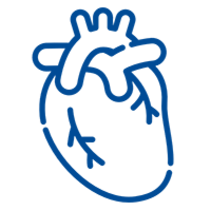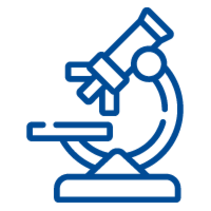Core and Shared Facilities

CardioVascular BioBank (CVBB)
The CardioVascular BioBank (CVBB) collects, processes and stores human tissue (subject to patient consent), which would otherwise be discarded during cardiovascular surgery.
The goal of the CVBB is to archive the for cardiac reasarch invaluable human probes for current and future science. Since its opening in 2017 samples from more than 1000 patients, over 1600 tissue samples and 1600 blood samples could already be collected, and we are indebted to all tissue donors.

Microscopy Facility SCI-MED
SCI-MED (Super-Resolution Confocal/Multiphoton Imaging for Multiparametric Experimental Designs) is a microscopy facility at the Institute for Experimental Cardiovascular Medicine (IEKM), which was established with the dedicated goal to facilitate experimental cardiovascular research in Freiburg with advanced microscopy methods and systems.
Two state-of-the-art fluorescence microscopes (a confocal and a multiphoton-/confocal) and a high-end image analysis workstation have been brought into service with financial support from the DFG (§91b grant) and the state of Baden-Württemberg. The automated slide scanner (brightfield/fluorescence) was funded by IEKM.
An inverted confocal microscope allows recording series of optical sections and 3D imaging on various types of samples, ranging from individual cells to tissue sections, biopsies and intact organ fragments. A white light laser in combination with ultrasensitive spectral detection allows one to define fluorescence excitation lines and detection windows with nanometer-precision over a broad range of wavelengths. This supports simultaneous identification of multiple reporter molecules. The second microscope (Fig. 1B) is an upright multiphoton-/confocal microscope, used mainly for characterisation of tissue and tissue sections. This microscope allows one to detect fluorescence signals also from deeper within intact tissues, without mechanical cutting.
Both systems are equipped with a super-resolution module that employs deconvolution-based algorithms for surpassing the classic diffraction-limited resolution (x/y resolution down to 120 nm).
A special feature of the new SCI-MED systems is the possibility to also measure fluorescence lifetimes. This provides an additional data dimension, independent of colour and intensity. It enables one, for example, to reject unspecific background fluorescence, or to visualise minimal differences in the local nano-environment of a fluorescent reporter which, for instance, can be used to discriminate between healthy and diseased/injured cells.

Freiburg Optical NeuroImaging FrONI
The FrONI research platform aims to advance near-infrared spectroscopy (NIRS) for clinical and basic research in humans and animal models.
It offers a modular, scalable NIRS infrastructure capable of spatially resolved topographic and tomographic measurements with hundreds of channels. Three main methodological approaches are used: NIRS-CBF, NIRS-NET, and NIRS-FUN. The mobile NIRS unit enables use in various contexts, including intra- and perioperative measurements, intensive care monitoring, functional lab experiments, field studies, and multimodal measurements. It supports compatibility with EEG, CT/X-ray, PET, eye tracking, tDCS/TES, and additional modules like fMRI and TMS.

AMIR-CF
The main focus of AMIR-CF is multimodal imaging for pre-clinical and translational research. We offer different small animal imaging modalities as MRI, NMR-Spectroscopy, µCT and Ultrasound. Additionally small animal optical imaging (BLI & FLI) as well as radiation applications can be booked via the AMIR-CF.

MRDAC CF
The MR development and application center (MRDAC) offers cutting edge MR services for clinical and commercial users of Magnetic Resonance.

